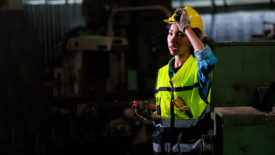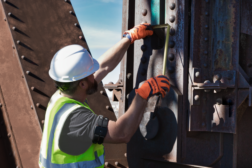Home » Keywords: » heat stress
Items Tagged with 'heat stress'
ARTICLES
Best Practices
WBGT meters and understanding how to determine risk
Read More
Back to basics for heat safety
Education process boils down to 3 important training topics
August 18, 2023
Technology helps improve worker safety in hot environments
Increasing temperatures raise risk of heat stress
July 13, 2023
EVENTS
Webinar Sponsored Webinars
6/29/23 to 6/29/24
Contact: Amy Jackson
3 Steps to an Impactful Heat Stress Prevention Program
Get our new eMagazine delivered to your inbox every month.
Stay in the know on the latest safety trends.
SUBSCRIBE TODAYCopyright ©2023. All Rights Reserved BNP Media.
Design, CMS, Hosting & Web Development :: ePublishing










